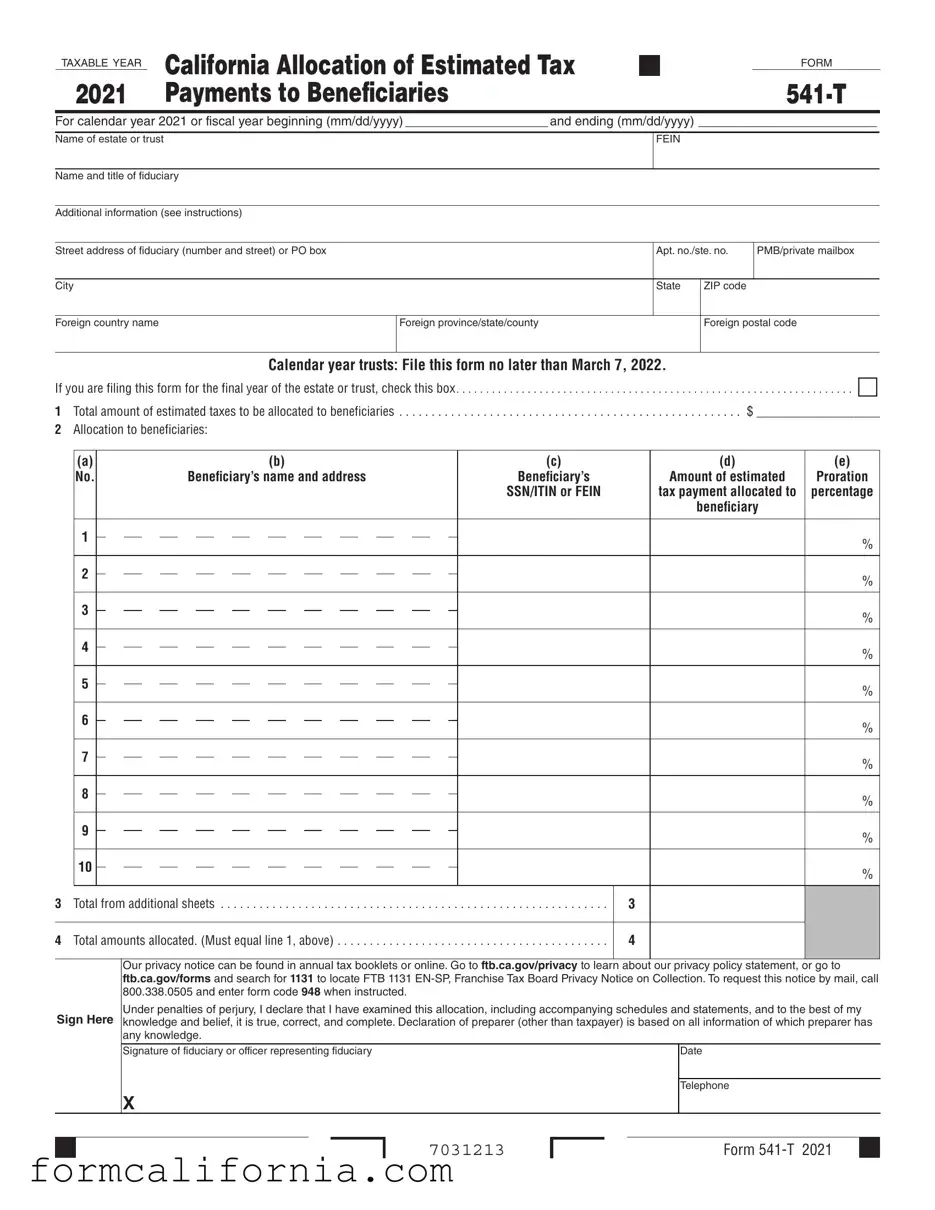The California Form 541, Fiduciary Income Tax Return, is closely related to the Form 541-T as it is the primary tax document filed by estates or trusts to report their income, deductions, gains, losses, and tax liability for a tax year. Form 541-T allows the income and deductions to be allocated to the beneficiaries, which is crucial for accurately completing Form 541, ensuring that the tax responsibilities are correctly reported and distributed among the involved parties.
Form 1041, U.S. Income Tax Return for Estates and Trusts, shares significant similarities with California Form 541-T, as it is the federal counterpart used to report the income, deductions, and credits of estates and trusts on a national level. Both forms facilitate the process of allocating estimated tax payments to beneficiaries, maintaining consistency in taxation principles across federal and state levels, but Form 541-T specifically adheres to California's tax codes and regulations.
The Schedule K-1 (541), Beneficiary’s Share of Income, Deductions, Credits, etc., is intricately connected to Form 541-T because it itemizes the distributions of income and deductions reported on Form 541-T to individual beneficiaries. This document ensures that beneficiaries are aware of their tax obligations based on the distributions they receive, enabling precise and accurate tax reporting from each beneficiary's side.
Form 541-B, California Income Tax Return for Trust Beneficiaries, although not identically structured, complements the information reported on Form 541-T. It focuses on detailing the income received by beneficiaries from a trust, further emphasizing the necessity of accurate allocation of estimated tax payments to beneficiaries as determined in Form 541-T.
The Estimated Tax for Individuals, Form 540-ES, while primarily for individuals, connects to Form 541-T through the allocation of estimated tax payments. If a trust elects to allocate such payments to beneficiaries, those individuals might need to adjust their own estimated payments using Form 540-ES based on the additional income reported from trusts or estates, highlighting the interdependence between personal and fiduciary tax responsibilities.
Form 1099-DIV, Dividends and Distributions, is indirectly related to Form 541-T as it reports dividends and distributions received, which may be part of a trust or estate's income distribution to beneficiaries. When a beneficiary receives a distribution that has been reported on Form 1099-DIV, this could affect the amounts reported on Form 541-T, showcasing the flow of income through various reporting forms.
The California Estimated Tax for Corporations, Form 100-ES, parallels the individual estimated tax form and Form 541-T in its functionality for corporations. Corporations, like trusts, might allocate estimated tax payments to shareholders, similar to how trusts allocate payments to beneficiaries. Although the recipients and entities differ, the principle of allocating estimated taxes is a shared concept among these forms.
Lastly, Form 1040-ES, Estimated Tax for Individuals, at the federal level, echoes the purpose of Form 541-T and 540-ES for California individuals. Beneficiaries who receive income from trusts or estates may need to adjust their estimated tax payments at both the state and federal levels using Form 1040-ES, reflecting the wider impact of allocations made on Form 541-T on an individual’s total tax obligations.

